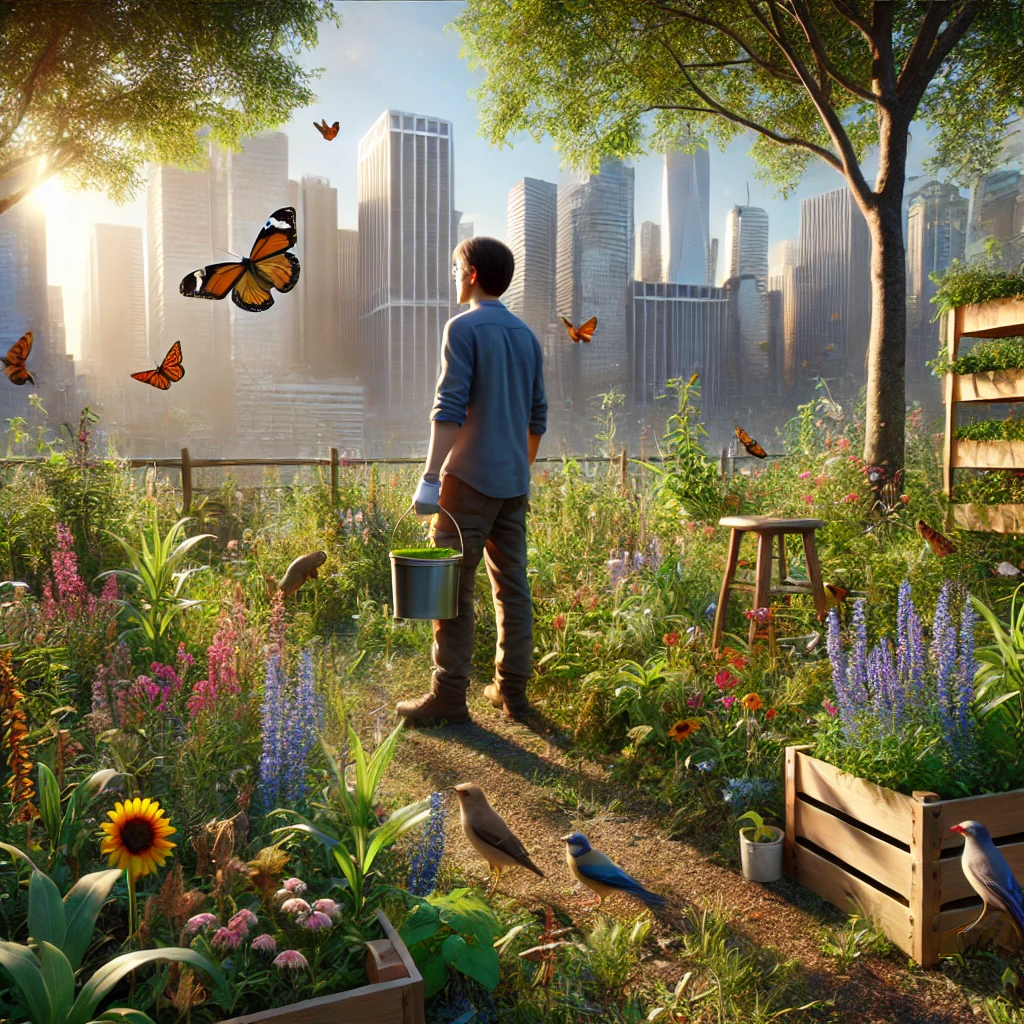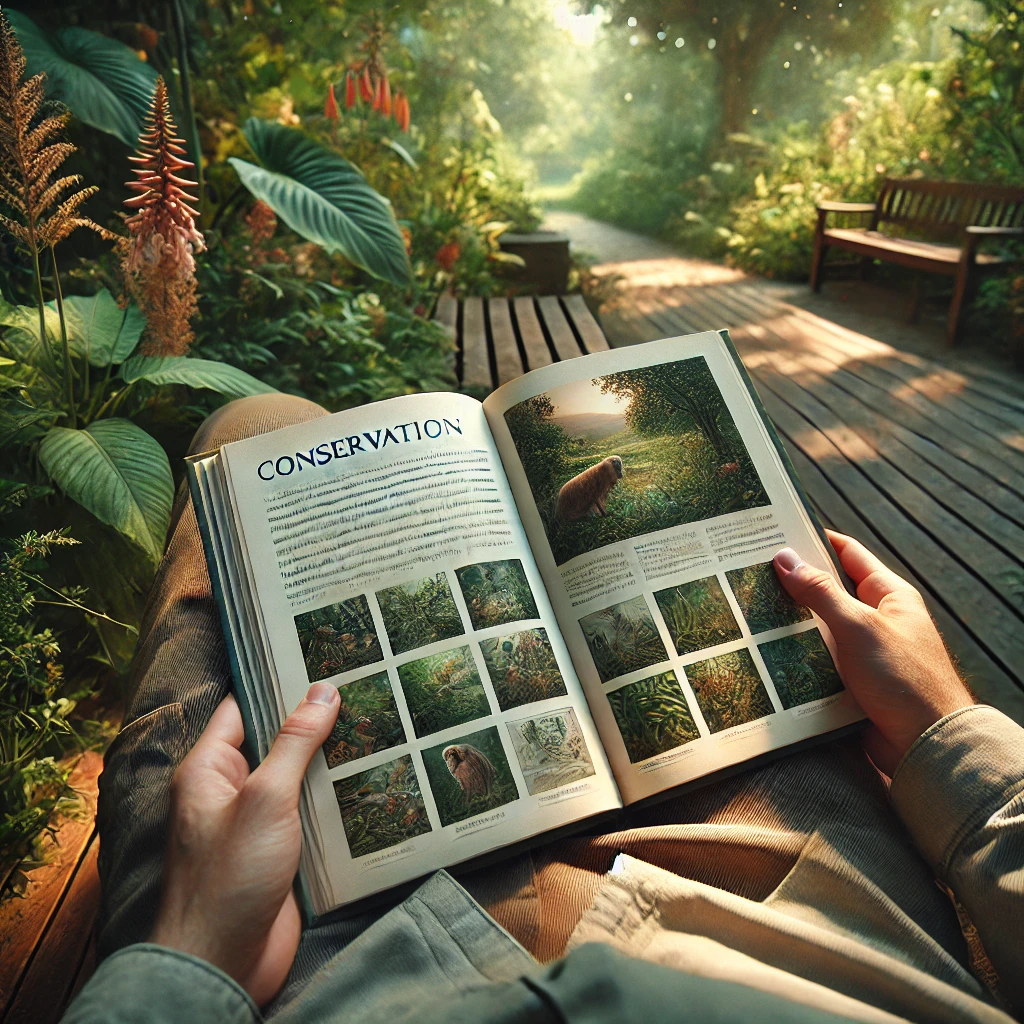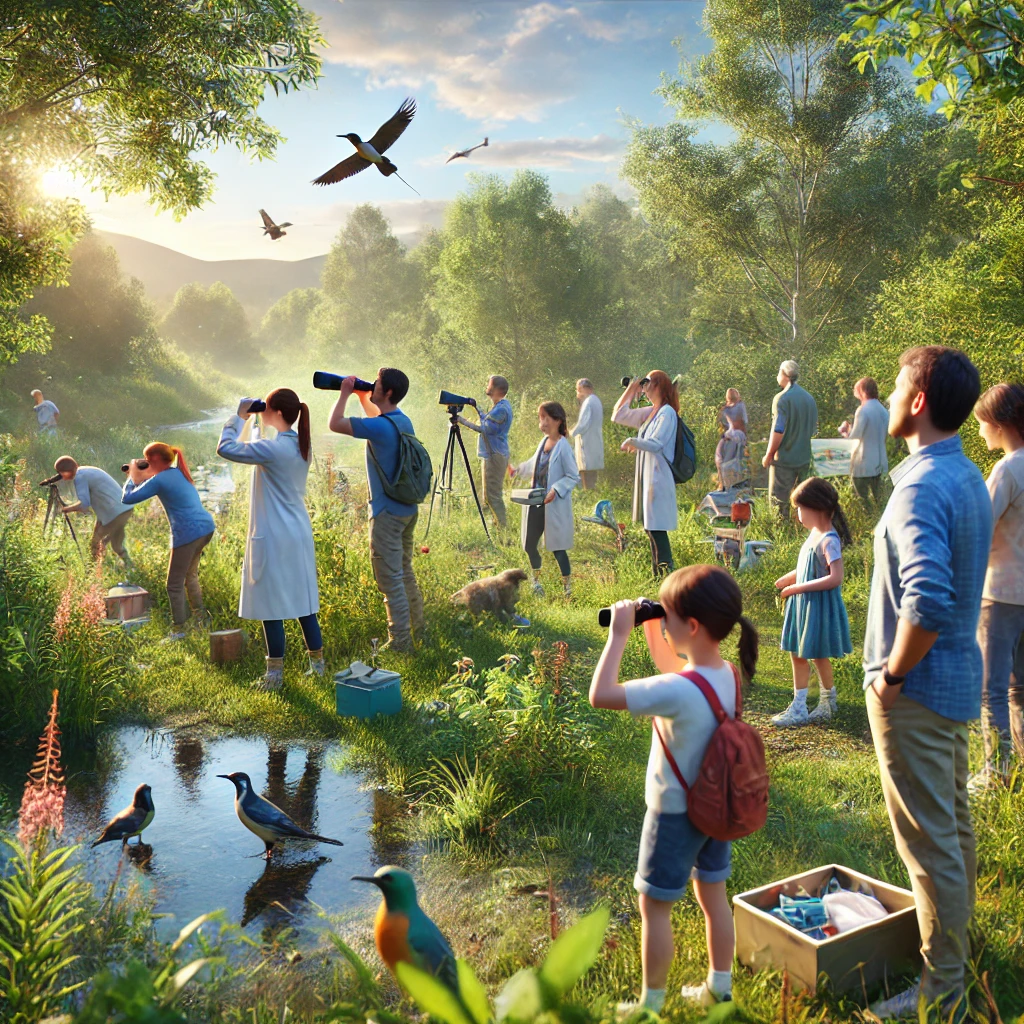Picture this: you’re strolling down a bustling city street, dodging selfie-taking tourists and caffeine-powered businesspeople, when suddenly you spot a family of ducks waddling across the crosswalk like they own the place. Welcome to the wild world of urban biodiversity, where nature and skyscrapers collide in a bizarre dance that would make David Attenborough scratch his head.
Urban areas might seem like concrete deserts where the only wildlife consists of pigeons fighting over discarded pizza crusts, but beneath the surface lies a surprisingly rich tapestry of flora and fauna. From pocket parks teeming with butterflies to rooftop gardens buzzing with bees, our cities are secretly harboring more biodiversity than you might think. But here’s the million-dollar question: how do we keep this urban ecosystem thriving while still making room for that new artisanal coffee shop on every corner?
In this blog post, we’re going to dive headfirst into the wacky and wonderful world of biodiversity conservation in urban areas. We’ll explore why it matters, how it’s being done, and why you should care about that patch of weeds growing through the sidewalk cracks. So, grab your binoculars (or your smartphone with a fancy zoom lens), and let’s embark on a safari through the urban jungle!
Why Urban Biodiversity Matters: It’s Not Just About Looking Pretty
The Circle of Urban Life
Before we dive into the nitty-gritty of urban biodiversity conservation, let’s take a moment to appreciate why it’s so darn important. You might be thinking, “Who cares about a few pigeons and some scraggly trees? I’ve got rent to pay!” Well, my dear city-dwelling friend, urban biodiversity is about much more than just giving you something nice to look at while you’re stuck in traffic.
Urban ecosystems play a crucial role in maintaining the overall health of our cities and the people who live in them. They provide essential services like air purification, temperature regulation, and water filtration. Imagine if trees could invoice us for their air-cleaning services – we’d all be broke! Plus, urban green spaces offer much-needed refuges for both wildlife and humans alike. After all, where else are you going to practice your interpretive dance routine without judgment?
Nature’s Stress-Busters
But wait, there’s more! Studies have shown that exposure to nature in urban environments can have significant positive impacts on mental health and well-being. In fact, a 2019 study published in the journal “Scientific Reports” found that people who spent at least two hours a week in nature reported significantly better health and well-being than those who didn’t. So, the next time your boss catches you staring out the window at that sparrow building a nest, just tell them you’re practicing preventive healthcare.
Biodiversity: The Spice of Life
Biodiversity isn’t just a fancy word scientists use to sound smart at parties. It’s the secret sauce that keeps our ecosystems functioning and resilient. In urban areas, biodiversity helps maintain ecological balance, supports pollination (hello, urban honey!), and even helps control pests. Who needs expensive exterminators when you’ve got a family of bats living in your attic?
Here’s a quick look at some of the benefits of urban biodiversity:
| Benefit | Description | Fun Fact |
|---|---|---|
| Air Quality | Trees and plants filter pollutants | One large tree can provide a day’s supply of oxygen for up to four people |
| Temperature Regulation | Green spaces help combat urban heat island effect | Urban parks can be up to 4°C cooler than surrounding built-up areas |
| Water Management | Natural areas absorb rainwater, reducing flood risk | A single mature tree can intercept more than 15,000 liters of water per year |
| Mental Health | Access to nature improves well-being | Hospital patients with views of trees recover faster than those without |
| Biodiversity Support | Urban habitats can support diverse species | London’s gardens host over 3,000 species of invertebrates |
The State of Urban Biodiversity: It’s Complicated
Urban Sprawl: The Biodiversity Bulldozer
Now that we’ve established why urban biodiversity is the bee’s knees (sometimes literally), let’s take a look at how it’s faring in our concrete jungles. Spoiler alert: it’s not all sunshine and rainbows.
Urbanization has been expanding faster than a teenager’s shoe size, gobbling up natural habitats and turning them into strip malls and parking lots. According to the United Nations, 55% of the world’s population lived in urban areas in 2018, and this number is projected to increase to 68% by 2050. That’s a lot of potential nature lovers crammed into cities, folks!
This rapid urbanization has led to habitat fragmentation, pollution, and the introduction of invasive species. It’s like Mother Nature is trying to play a game of Tetris, but we keep changing the shapes on her. The result? Many native plant and animal species are finding themselves squeezed out of their urban homes faster than you can say “gentrification.”
Not All Doom and Gloom
But before you start planning your off-the-grid eco-commune, there’s some good news too. Many cities around the world are recognizing the importance of urban biodiversity and taking steps to protect and enhance it. From creating wildlife corridors to implementing green building policies, urban planners are starting to think outside the concrete box.
In fact, some cities are becoming unexpected havens for certain species. For example, peregrine falcons have found a cozy home among the skyscrapers of New York City, using tall buildings as substitute cliffs for nesting. It’s like they’ve decided to upgrade from their rural starter homes to fancy urban penthouses!
Here’s a quick snapshot of urban biodiversity trends:
| Trend | Impact | Example |
|---|---|---|
| Habitat Loss | Negative | Over 40% of plant species in urban areas of Australia are non-native |
| Green Space Initiatives | Positive | Singapore increased its green cover from 36% to 47% between 1986 and 2007 |
| Urban Wildlife Adaptation | Mixed | Coyotes have successfully colonized many North American cities |
| Citizen Science Projects | Positive | The Global Urban Tree Inventory collected data on over 1 million trees in cities worldwide |
Conservation Strategies: Getting Creative in the Concrete Jungle
Green Infrastructure: Not Your Grandma’s Garden
Now that we’ve painted a picture of urban biodiversity (think Jackson Pollock meets National Geographic), let’s talk about how we can keep this urban ecosystem party going. Enter green infrastructure – the superhero of urban biodiversity conservation, swooping in to save the day with its cape made of leaves and roots.
Green infrastructure refers to strategically planned and managed networks of natural and semi-natural areas in urban settings. This includes everything from parks and gardens to green roofs and rain gardens. It’s like giving your city a makeover, but instead of botox and hair dye, we’re using trees and wildflowers.
One of the coolest examples of green infrastructure is the High Line in New York City. This former elevated railway line has been transformed into a lush, 1.45-mile-long public park that snakes through the city. It’s like someone decided to play SimCity in real life and accidentally created an urban biodiversity hotspot!
Connectivity is Key: Wildlife Corridors
Remember that game of Frogger you used to play as a kid? Well, for urban wildlife, crossing the street is often a real-life version of that game – and they don’t have extra lives. That’s where wildlife corridors come in. These are connected strips of habitat that allow animals to move safely between fragmented urban green spaces.
Cities like Edmonton, Canada, have implemented wildlife passage programs, creating underpasses and overpasses for animals to cross busy roads safely. It’s like building a subway system for squirrels and raccoons – minus the delays and suspicious odors.
Biodiversity-Friendly Architecture: Skyscrapers with a Green Thumb
Who says buildings have to be boring boxes of concrete and glass? Architects around the world are embracing biodiversity-friendly design, creating structures that incorporate green spaces and provide habitats for urban wildlife. It’s like they’re playing Jenga, but with plants and animals instead of wooden blocks.
One stunning example is the Bosco Verticale (Vertical Forest) in Milan, Italy. These residential towers are covered in more than 900 trees and over 2,000 plants, creating a vertical ecosystem that supports birds and insects. It’s like someone took the Hanging Gardens of Babylon and gave them a modern, urban twist!
Community Involvement: It Takes a Village (or a Metropolis)
Citizen Science: Unleash Your Inner Darwin
You don’t need a Ph.D. in ecology to contribute to urban biodiversity conservation. In fact, citizen science projects are playing an increasingly important role in monitoring and protecting urban ecosystems. It’s like crowdsourcing, but instead of asking people to name your band, you’re asking them to count butterflies.
Programs like iNaturalist and eBird allow everyday urban dwellers to report wildlife sightings and contribute to large-scale biodiversity databases. So, the next time you spot a rare bird in your local park, don’t just post it on Instagram – contribute to science! Who knows, you might even discover a new species hiding in plain sight. Homo sapiens instagrammensis, anyone?
Community Gardens: Grow Your Own Urban Jungle
If you’ve ever dreamed of being a farmer but don’t want to give up your daily latte habit, community gardens might be just the ticket. These shared green spaces not only provide fresh produce but also create valuable habitats for urban wildlife. It’s like having a slice of the countryside right in your backyard – minus the cow poop and 4 AM wake-up calls.
Cities like Detroit have embraced urban agriculture as a way to revitalize neighborhoods and support biodiversity. The city’s urban farming initiatives have transformed vacant lots into thriving green spaces that buzz with life – both human and non-human.
Education and Outreach: Spreading the Green Gospel
Let’s face it – not everyone gets excited about biodiversity conservation. (I know, shocking, right?) That’s where education and outreach programs come in. By raising awareness about the importance of urban biodiversity, we can create a new generation of city-dwelling nature lovers.
From school programs that teach kids about local ecosystems to community workshops on wildlife-friendly gardening, there are countless ways to spread the word. It’s like being a biodiversity influencer, but instead of promoting detox teas, you’re promoting the value of that scraggly weed growing through the sidewalk crack.
Challenges and Opportunities: The Urban Biodiversity Obstacle Course
Balancing Act: Development vs. Conservation
As we’ve seen, promoting biodiversity in urban areas is no walk in the park (pun absolutely intended). One of the biggest challenges is balancing the need for urban development with the imperative of conservation. It’s like trying to fit an elephant into a Mini Cooper – something’s gotta give.
Cities need housing, infrastructure, and economic development to thrive. But they also need green spaces and biodiversity to remain livable and resilient. Finding the sweet spot between these competing needs is the urban planner’s equivalent of solving a Rubik’s Cube blindfolded.
Climate Change: The Uninvited Guest at the Biodiversity Party
As if urban biodiversity didn’t have enough challenges, climate change has decided to crash the party like that one friend who always shows up uninvited and eats all the snacks. Rising temperatures, changing precipitation patterns, and extreme weather events are putting additional stress on urban ecosystems.
But here’s the plot twist: urban biodiversity can actually help cities adapt to climate change. Green spaces can reduce the urban heat island effect, absorb excess rainwater, and provide natural cooling. It’s like nature’s version of a Swiss Army knife – multifunctional and always handy in a crisis.
Invasive Species: The Biological Gate-Crashers
Urban areas are like all-you-can-eat buffets for invasive species. These biological interlopers often thrive in disturbed urban environments, outcompeting native species and disrupting local ecosystems. It’s like a reality TV show where the newcomers always seem to win, no matter how much we root for the underdogs.
Managing invasive species in urban areas requires a combination of prevention, early detection, and control measures. It’s a bit like playing whack-a-mole, but with plants and animals instead of plastic moles. And trust me, it’s just as frustrating.
The Future of Urban Biodiversity: Crystal Ball Not Included
Smart Cities: When Technology Meets Ecology
As we peer into the murky future of urban biodiversity, one thing is clear: technology will play a big role. The concept of “smart cities” is evolving to include not just digital connectivity but also ecological intelligence. Imagine a city where sensors monitor air quality, water flow, and wildlife movements in real-time, allowing for adaptive management of urban ecosystems. It’s like giving your city a Fitbit, but for nature.
Biophilic Design: Bringing the Outside In
The future of urban design is all about blurring the lines between the built environment and nature. Biophilic design principles aim to satisfy our innate need to connect with nature by incorporating natural elements into buildings and cityscapes. Think of it as urban camouflage, but instead of hiding from nature, we’re inviting it to move in with us.
From living walls that purify indoor air to office buildings designed to mimic natural forms, biophilic design is changing the face of our cities. It’s like we’re finally realizing that nature isn’t just something to look at through a window – it’s an integral part of our urban lives.
Policy and Planning: Making Biodiversity the Star of the Show
As awareness of the importance of urban biodiversity grows, we can expect to see more policies and planning initiatives that put nature front and center. Cities around the world are adopting biodiversity strategies, setting targets for green space creation, and integrating ecosystem services into urban planning.
For example, the City Biodiversity Index (also known as the Singapore Index) provides a standardized way for cities to measure and monitor their biodiversity conservation efforts. It’s like a report card for urban nature – hopefully with fewer F’s than your high school algebra tests.
Embracing the Wild Side of City Life
As we wrap up our whirlwind tour of urban biodiversity conservation, let’s take a moment to appreciate the wild and wonderful world that exists right under our noses in our cities. From the persistent dandelion pushing through a crack in the sidewalk to the peregrine falcon nesting on a skyscraper ledge, urban nature is all around us – if we just take the time to look.
Conserving biodiversity in urban areas is not just about saving a few trees or creating pretty parks. It’s about building resilient, healthy, and livable cities that can thrive in the face of climate change and rapid urbanization. It’s about recognizing that we’re not separate from nature – we’re part of it, even when we’re surrounded by concrete and glass.
So, the next time you’re rushing through your busy urban life, take a moment to stop and smell the roses (or the urban-adapted, pollution-resistant equivalent). Who knows? You might just discover a whole new world of biodiversity right in your own backyard. And remember, in the grand ecosystem of life, we’re all just trying to find our niche – whether we have wings, roots, or a Netflix subscription.
Now go forth and spread the gospel of urban biodiversity! Just try not to step on any ants while you’re at it.
Disclaimer: This blog post is based on information available up to 2020. While we strive for accuracy, urban biodiversity is a rapidly evolving field. Some information may have changed since then. If you spot any inaccuracies or have updated information, please let us know so we can keep our urban biodiversity knowledge as fresh as a newly planted rooftop garden!




